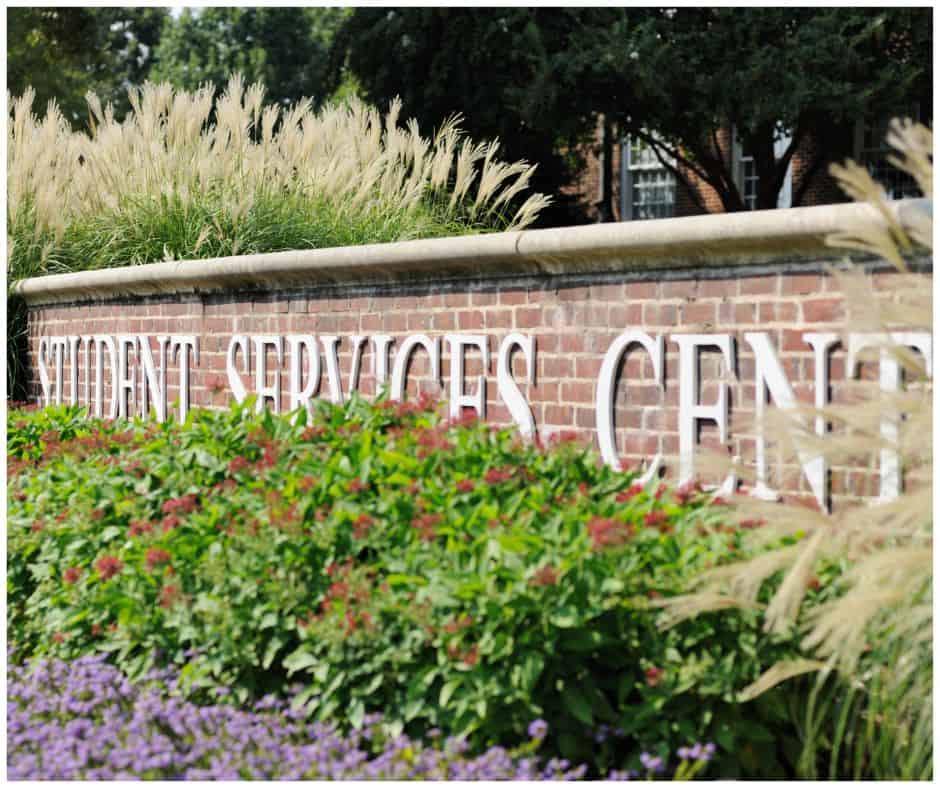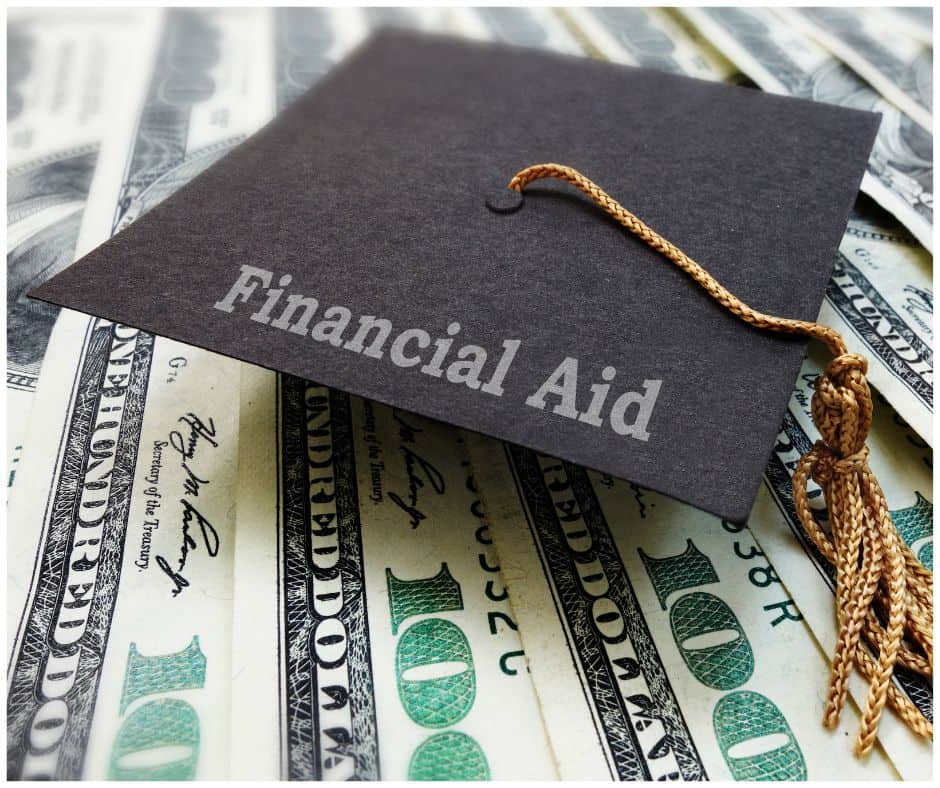Updated on July 26th, 2024
Everyone has seen news about skyrocketing college expenses and wondered, Why is college so expensive?” It’s everywhere anyone looks, and it only seems to be getting worse. It’s no secret college tuition is too high, has risen too quickly, and debt is unmanageable for a staggering number of students.
Student loan debt in the U.S. has reached a staggering $1.77 trillion, and the average student graduate will have to repay more than $37,000. The big question everyone is trying to answer about student debt now is, “Why?” The other big question is, “How do we fix it?” No doubt, this question is getting more desperate.
If you want to learn more about how your student can avoid student loan debt by winning scholarships, including how to find legitimate scholarships, attend our free webinar. To see when the next training session is available, head to https://thescholarshipsystem.com/freewebinar.
Contents
Where Did the Student Loan Debt Crisis Originate?
Many in the older generation were once able to pay for college with the money they made from summer jobs or working part-time while pursuing a college education. And for many middle-class families that had students starting college more than 30 years ago, parents were able to step in and help their kids pay for college.
The rising costs have made attending college increasingly difficult for many students, leading to a significant burden of student loan debt.
Over the next few decades, state and federal funding for higher education was massacred. These ever-increasing cuts forced colleges and universities to raise tuition more, which in turn forced millennials to take on crushing educational loans that significantly harmed their financial stability.
This is the story college administrators like to tell when they’re asked to explain why, over the past 30 years, college tuition at public universities has nearly quadrupled to over $9,750 per year in 2024. For private four-year institutions, tuition and fees experienced a 361% increase, hitting $41,540 per year. It is a story that makes nearly every student and parent wonder, “Is it really true?” It may, in fact, actually be the opposite of the truth.
Is it True?
In a recent National Public Radio series on the cost of a college degree, Sandy Baum of the Urban Institute told NPR, “It’s not that colleges are spending more money to educate students. It’s that they have to get that money from someplace to replace their lost state funding — and that’s from tuition and fees from students and families.”
In fact, public investment in higher education in America is vastly larger today, in inflation-adjusted dollars, than it was during the supposed golden age of public funding in the 1960s. This kind of spending has increased at a much faster rate than government spending in general.
While federal student loans are a significant factor, private student loans also contribute to the rising debt burden on students. This likely stems from the explosion of college tuition since the 1970s, but even so, it’s still tough to explain why college tuition has skyrocketed. In fact, the growth in tuition likely stems from a variety of factors. For example, a paper from the Federal Reserve Bank of New York suggested that colleges were raising their sticker prices because the federal government was giving students more loans.
The Single Most Important Factor Increasing College Tuition
Adam Davidson in New York Times Magazine said the single most important factor behind the rise in tuition is that high tuition allows colleges to “shape” their student bodies. What does this mean exactly? In essence, the higher the tuition cost, the easier it is for universities to recruit the exact type of students they want by offering them college tuition discounts.
Increased investment in student services, such as career counseling and mental health support, has also driven up tuition costs.
Ah, now we’re getting somewhere. It’s about pricing strategy to attract students! That sounds like a sales trick that’s as old as time itself. Tricks that used car salesman use on unsuspecting buyers, but they’re directed at prospective students and their parents.
Kevin Crockett, a consultant with Ruffalo Noel Levitz, told The Times Magazine, “I’ve got to have enough room under the top-line sticker price.”
Adam Davidson goes on to say: “A school that charges $50,000 is able to offer a huge range of inducements to different sorts of students. Some could pay $10,000, others $30,000 or $40,000. Only a handful can pay the full price.” A college is able to then recruit a diverse set of students with competitive test scores and accomplishments. It’s all about the math and law of probability.
This, of course, explains primarily the reason for tuition increases at private universities and colleges that don’t get any state funding. At public institutions, there are additional factors for college tuition increases, such as students rather than state governments absorbing more college costs.
But What About the Future of College Tuition Costs?
Today’s college prices will seem cheap when compared to the price hikes of tomorrow. Still, they’re rising at alarming rates, far faster than inflation. As students and parents probably have noticed, in-state public schools have also recently increased tuition costs–a lot! As an example, the California State University’s board of trustees approved a 34% tuition hike across five years, with an initial 6% increase occurring during the 2023-2024 school year and additional 6% increases occurring annually through the 2027-2028 academic year.
Despite the rising tuition, fees, and other costs, obtaining a bachelor’s degree seemingly remains crucial for higher earnings and better job opportunities. Even at low-tuition schools, college costs are soaring out of control, especially if students add an extra year to make the workload manageable or complete requirements after changing majors.
Critics blame high prices on overpaid professors or unnecessary expenses. But is that the real reason why college tuition is getting so high? Lobbyists tend to blame budget cuts from the state legislature. But a new study tells a different story–how easy it is to get federal student aid (loans!). They make it very easy–almost too easy.
Federal student aid accounts for most of the college tuition increases between 1987 and 2010, according to the National Bureau of Economic Research. It’s simple. The more money students can borrow, the more colleges are able to charge. They are playing off the government’s ability to offer student loans to anyone who qualifies. So, who can qualify for federal student loans? Every college student in the U.S.!
Over the last few decades, the amount of aid available to students has increased dramatically. Subsidized loans expanded greatly, and guess what else–unsubsidized loans also came into existence. But looking at the big picture, does that money offset the costs to students? Researchers say no, absolutely not. It had the reverse effect.
Instead, colleges increased tuition even more because they knew federal financial aid could cover the difference. With this kind of setup, college students and their families are at the mercy of the federal government and colleges everywhere. Student aid may cover more of the tuition, but if the aid wasn’t available, tuition might not have gone up in the first place.
College students are being played like pawns in a cruel monopoly game, and it’s just not fair.
Grey Gordon, an assistant professor at Indiana University says, “You’ve got to somehow tie aid to lowered tuition if you want to give money to students. You have to somehow structure it so colleges can’t just increase tuition and capture that money.” That means some sort of regulation by an agency or governing body.
Other critics deny this train of thought. In fact, David Feldman, an economics professor at the College of William & Mary and author of Why Does College Cost So Much? says that increasing federal aid will rarely change how high a college sets its tuition. “A college’s sticker price is set by its wealthiest students’ ability to pay — and the wealthiest students never take out loans.”
But that doesn’t mean colleges never use federal aid to their advantage. Especially at private colleges, Feldman said, federal aid may replace existing scholarships. Take a student who would have gotten $20,000 from a college. If she gets an extra $1,000 in Pell Grants, she may receive $19,000 from her college instead. The student pays the same, but the college pays less. At public universities, increases in Pell Grants typically lower net tuition. “It’s a very different system, Feldman said. “That’s the nuance that’s missing.”
Related articles:
- The Most Affordable Colleges with the Best Financial Aid
- What You Need to Know About Out of State Tuition
For-profit institutions, on the other hand, are the one sector where student aid tuition increases are perhaps most evident.
A study done at Harvard University showed for-profit institutions that participate in the federal aid program charged tuition that was 78% higher than those that didn’t.
It’s a story that’s pounded into everyone’s heads all the time in the higher education arena–state support is down, and students are covering the difference. This idea is also backed up by research that states investing more in higher education will see lower prices, according to John Barnshaw, a senior higher education researcher at the American Association of University Professors.
“As states increased their funding, the net price dropped,” Barnshaw said, “and it was a statistically significant drop.” According to Gray Gordon, “Even if appropriations have fallen, there are other sources of revenue that have offset that. Sports programs, hospitals, and endowments all play a part. Endowments is the big one.”
However, everyone must be careful and know what to believe based on hard evidence and research so the population can pinpoint the exact root causes and have a good starting point for fixing the problems, whatever they are. Mudslinging and blaming back and forth will solve nothing. The irresponsibility of the federal government and how colleges and universities operate must all be addressed in tandem and in the most positive manner possible.
A Growing Cost Disease
Now for a word on a touchy subject–faculty salaries. The idea that faculty salaries increase tuition is a popular one, and the reason is something called Baumol’s cost disease. In the 1960s, economist William Baumol said that specific sectors become more productive over time, which allows them to cut labor costs and lower prices. But industries that don’t see productivity increases still end up increasing their salaries, which drives up the cost for consumers.
But according to researchers, Baumol’s hypothesis doesn’t hold up. In Gray Gordon’s model, costs were up, but instead of raising college tuition, the response to the higher costs was to increase enrollment. “The cost is not a per-student cost,” Gordon said. “It has not become more costly to educate an additional student. It’s become more costly to educate all students in general.”
It’s hard not to blame rising costs on faculty salaries. That may be the case with some colleges, but it’s more often the exception rather than the rule. In fact, colleges rely more and more on part-time faculty members – not tenured faculty positions – who frequently work for low pay and no benefits. “I go to college campuses almost every week and look at their expenses,” said Howard Bunsis, an accounting professor at Eastern Michigan University who does research for the AAUP. “It’s not student aid that’s getting a bigger share of the pie. In most places, it’s the administration.”
Even if you base all of this on real data, it still doesn’t represent any real institution. Researchers plan to expand their work in the future, but the way the current models exist to explain this growing issue, it’s simply too complex to explain away with a few theories, no matter how relevant. “We need to look at the incentives that different kinds of schools face and understand the process of tuition setting in order to have a good understanding of how those schools are likely to respond to small changes in federal grant and loan policies.” David Feldman says. It will just take some adjusting and pivoting over time. This problem didn’t just grow overnight.
What You Can Do to Fight It
While taking on the state and federal governments and expressing your rage and anger might be a good idea at the time, it rarely resolves anything and mostly will have a detrimental effect on your personal stress levels. Here are some better alternatives to deal with the growing college tuition and student loan crisis:
Offering more online courses is a good place to start in reducing tuition costs. General education courses with a hundred or more students that have almost no student-teacher interaction could be just as effectively taught online.
The cost-savings is even easier to capture in the post-pandemic landscape. Many universities and colleges have rapidly introduced technology to support increases in distance learning due to emergency regulations that were put in place due to COVID-19. As a result, the core tech needed is likely in place currently.
Plus, this approach also frees up expensive real estate on campus while significantly increasing the size of the student population. With tens of thousands of additional students, tuition costs can be lowered. And they should be lowered.
Bring costs in line with revenue. For example, if a school costs $40,000 to attend or $160,000 for a four-year degree, you can reduce that cost by 25 percent by reducing tuition to $30,000 per year and making the appropriate cuts to ensure that it doesn’t lead to bankruptcy; or provide a mechanism so that students only pay full tuition for three out of those four years. This would essentially put a cap on the tuition once it reaches a specific limit.
Many students are now starting off at an affordable two-year college, either getting an associate’s degree and then transferring to a four-year university to earn their bachelor’s degrees or transferring the credits without getting associate’s college degrees. This is known as the two-step college option, and it has been shown to drastically cut your higher education expenses. Community colleges cost a fraction of what it costs to attend a four-year college. The myth of the “prestigious” college or university is a farce. It’s a ridiculous marketing label trap that students and families are now beginning to understand more. Don’t fall for it.
If you want to learn more about how your child can avoid student loan debt by winning scholarships, including how to find legitimate scholarships, attend our free webinar. To see when the next training session is available, head to https://thescholarshipsystem.com/freewebinar.
Make Some Noise
While there are many more methods students can use to reduce college tuition personally, the elephant in the room needs to be addressed. Parents and students need to make some real noise to get politicians to notice this horrible crisis and finally do something about it. As they say, “The squeaky wheel gets the oil.”
Now before going further, The Scholarship System isn’t endorsing any political party or candidate. Instead, the goal is to show ideas presented by various politicians. No pitchforks, please!
President Joe Biden has put some effort into addressing the college cost crisis. He attempted to provide $20,000 in student loan debt relief for many students. Though that initial effort was ultimately blocked, other plans are in the works that could assist many students. Additionally, President Biden launched the SAVE plan for student loan repayment, which may make a significant impact.
Many politicians have floated the idea of doubling need-based federal college grants, as well as adjusting various lending rules. Senator Bernie Sanders has often proposed making community college tuition-free for all students, at times stating that all public colleges and universities should either be “tuition-free or debt-free for working families.” In New Jersey, the legislature is considering a bill that would cap tuition increases, limiting them to 2% annually.
Some creative ideas have also been presented over the years. Senator and previous presidential candidate Mark Rubio once stated he does not think tax money should support the current higher education system. He also said that universities raise fees too often and too quickly. “The higher ed cartel pushes skyrocketing tuition and degrees that don’t lead to jobs. Yesterday’s leaders want to raise taxes and dump more money into this broken system.”
Rubio’s presented a proposal where students apply for Student Investment Plans. These plans would link students to private investors. In return for funding from investors, students would pay back part of their income to those investors for a set number of years. Unlike loans, students would not have to pay back the full amount that they borrowed from private investors. However, they would still have to pay a percentage of their income for the amount of time agreed.
Regretfully, many proposals to address the issue don’t move forward. Ultimately, the rising cost of college isn’t an easy problem to solve, and it all takes time and effort. Keep working on it, and keep on fighting the good fight. As a population, staying cohesive and unified to fix this massive problem is essential, as that improves everyone’s chances of finding a solution that gets us there, one way or another.
If you want to learn more about how your student can navigate rising college costs and avoid student loan debt by winning scholarships, including how to find legitimate scholarships, attend our free webinar. To see when the next training session is available, head to https://thescholarshipsystem.com/freewebinar.
If you liked this article, comment, subscribe, and share on your favorite social media app. You never know who it might help.










Leave a Reply